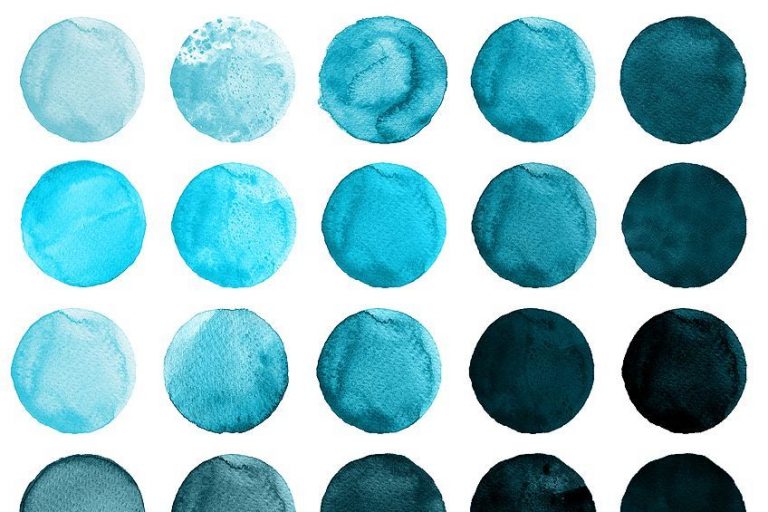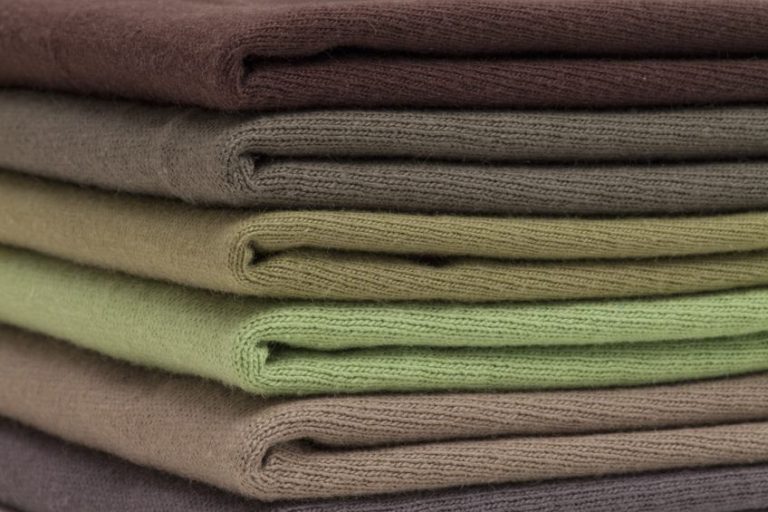What Does Green and Purple Make? – The Gray Spectrum
This post may contain affiliate links. We may earn a small commission from purchases made through them, at no additional cost to you.
Mixing colors is one of the best ways to improve your understanding of color theory, while also unlocking an array of new hues you can use in your art. Green and purple are great colors to use on their own, however, you might be wondering what happens if you mix them. Below, we explore the different colors that these hues produce, how you can make them yourself, and how you can use them in your art!
Table of Contents
What Does Green and Purple Make?
Combining green and purple paint will usually result in a dark gray. This is because the blue and yellow in the green as well as the red in the purple means you are mixing all primary colors together, which produces brown. The extra blue from the purple then turns this brown into a dark gray color. As with above you can also create shades, tints, and tones of this color by adding black to make a dark teal, white to make stone, or gray to make blue spruce respectively.

| Color Name | Color Hex Code | RGB Color Code | CMYK Color Code (%) | Color Hue |
| Dark Gray | #476B63 | 71, 107, 99 | 34, 0, 7, 58 | |
| Dark Teal | #263834 | 38, 56, 52 | 32, 0, 7, 78 | |
| Stone | #728782 | 114, 135, 130 | 16, 0, 4, 47 | |
| Blue Spruce | #485955 | 72, 89, 85 | 19, 0, 4, 65 |
Other Combinations of Green and Purple
If you remember from earlier, this color can also be mixed in many different ways to produce different hues. Understanding the color temperature of your green and purple is very important for ensuring that you do not end up with a muddy color. You should always aim to mix two colors of the same color bias for the best results.
By mixing a warm green and purple you can create a color that is closer to brown, while mixing a cool green and purple makes a color closer to blue-gray because of the added blue.
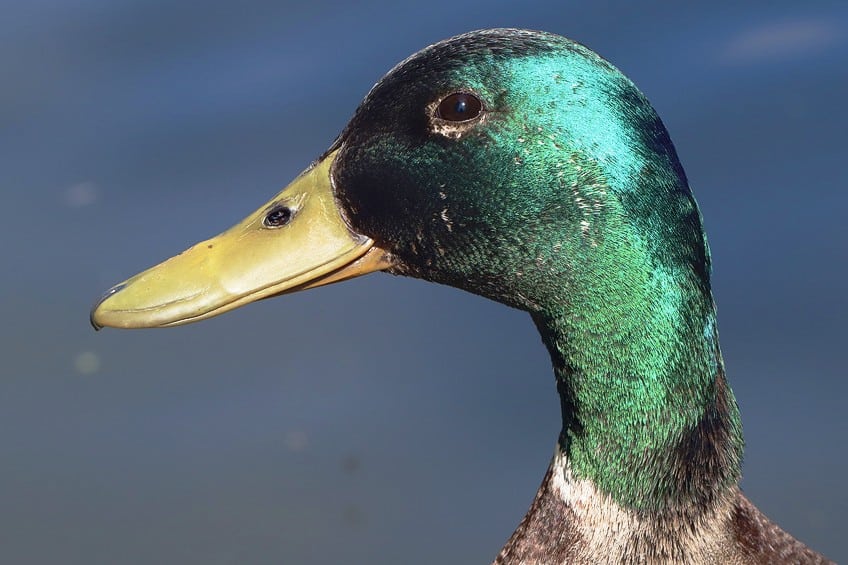
| Color Name | Color Hex Code | RGB Color Code | CMYK Color Code (%) | Color Hue |
| Warm Green and Purple | #676440 | 103, 100, 64 | 0, 3, 38, 60 | |
| Cool Green and Purple | #306967 | 48, 105, 103 | 54, 0, 2, 59 |
Understanding Green and Purple
The color green is synonymous with life, nature, and serenity while purple evokes feelings of balance, creativity, and even royalty. Green and purple can be combined to create many different colors such as dark gray, brown, and even blue depending on the exact colors used. Before delving into how to mix green and purple, it is helpful to understand some color theory.
There are three popular models that are used to visually represent color theory across many different mediums.
These color models provide a visual guide for the relationships between colors and are known as the RGB color model, the CMYK color model, and the RYB color model. You will see that purple and green are created in different ways across these different color models, and therefore produce different colors when they are mixed together.
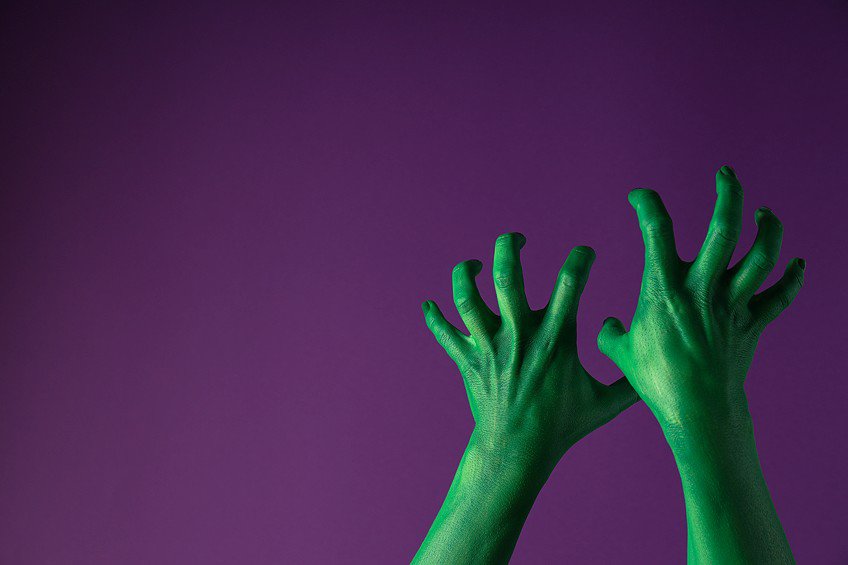
| Color Name | Color Hex Code | RGB Color Code | CMYK Color Code (%) | Color Hue |
| Green | #00C800 | 0, 200, 0 | 100, 0, 100, 22 | |
| Purple | #8D0DC5 | 142, 13, 197 | 28, 93, 0, 23 |
RGB Color Model
The RGB color model is used when talking about mixing light and is useful when creating digital art. Green makes up one of the primary colors of this model, alongside red and blue. Purple (or violet in this case) is a tertiary color in this model and is made by combining magenta (made from red and blue) and blue. Because this color model mixes light instead of pigment, combining all the primary colors together will make white.
Therefore, mixing green and purple, which contains the other two primaries, in this color model will produce a color that is almost white with a slight blue undertone.
CMYK Color Model
This color model is most often used when mixing inks and is commonly found in printers. In the CMYK color model, the secondary colors include red, blue, and green, the latter of which is made from a mix of yellow and cyan. Purple is actually a tertiary color mixed from magenta and blue. In this color model, combining all three primary colors together produces black, so mixing green and purple will produce a color that is almost black with a slightly blue undertone.
RYB Color Model
You may be familiar with the RYB color wheel, which has blue, red, and yellow as its primary colors. This color wheel is often used for mixing paints and combining all three primary colors together produces brown. Along with orange, purple and green are both secondary colors in the RYB color wheel. Green is produced by combining yellow and blue, while purple is produced by mixing red and blue.
Because of their position on the color wheel, purple and green are too close together to be considered complementary colors but too far apart to be analogous colors.
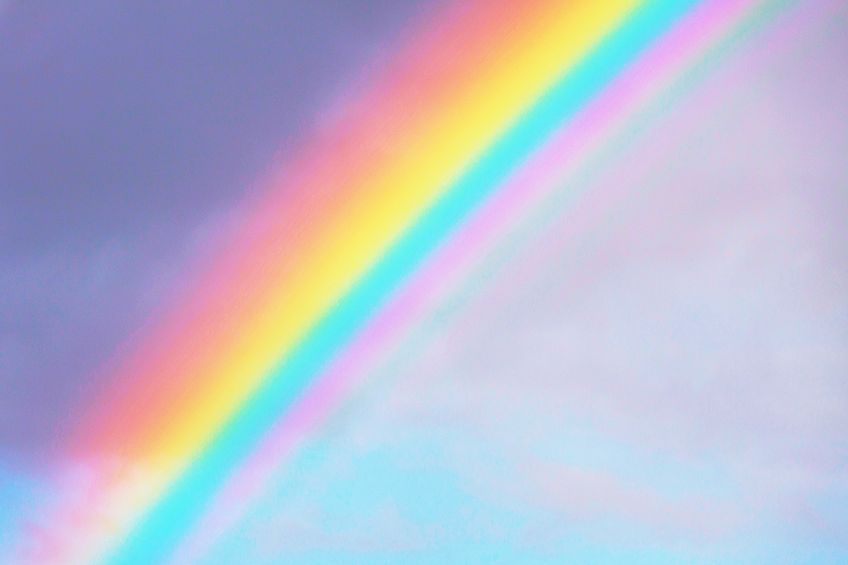
This means that they are not often used together and combining them can be a little tricky, however, you can still create some unique colors that are great to use in your art. For the remainder of this article, we will be referring to the RYB color model when talking about mixing green and purple.
How to Mix Green and Purple Separately
Now that you understand some basic color theory, we can explore how to mix both green and purple separately. The exact colors you use can have a big impact on the final look of your mixed color, so it is important to understand their different variations.
Different Variations of Green and Purple
Aside from these two basic hues, green and purple also come in cool and warm variations as well as a collection of tints, tones, and shades. While all greens and purples are technically cool colors, color temperature is relative. This means that certain greens and purples are warmer or cooler compared to others, depending on the exact proportions of the primary colors used to make them.
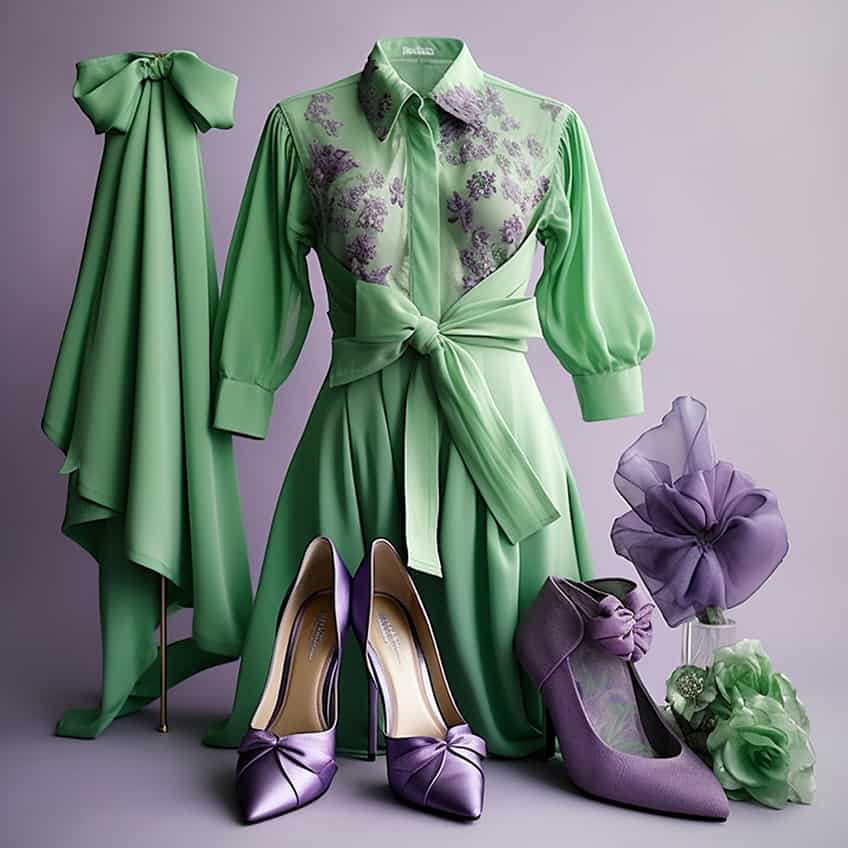
Warm and Cool Greens
As mentioned above, green is made using yellow and blue. Because yellow is a warm color, you can create a warm green by adding more yellow compared to blue. If you want to mix a cool green, you can do this by adding more blue, which is a cool color.

| Color Name | Color Hex Code | RGB Color Code | CMYK Color Code (%) | Color Hue |
| Warm Green | #50C800 | 80, 200, 0 | 60, 0, 100, 22 | |
| Cool Green | #00C843 | 0, 200, 67 | 100, 0, 67, 22 |
Warm and Cool Purples
Like with green, you can also create warm and cool purples by changing the ratio of the colors used to make it. Adding more red, which is a warm color, will result in a warm purple while adding more blue will give you a cool purple.

| Color Name | Color Hex Code | RGB Color Code | CMYK Color Code (%) | Color Hue |
| Warm Purple | #7E0080 | 126, 0, 128 | 2, 100, 0, 50 | |
| Cool Purple | #330080 | 51, 0, 128 | 60, 100, 0, 50 |
Tones, Tints, and Shades of Green and Purple
In addition to different color temperatures, green and purple also have different shades, tints, and tones. These are made by adding the neutrals black, white, and gray to your green or purple to change the values of the color. Adding black to each color will produce a shade which is darker like forest green or plum, while adding white will create a tint that is lighter such as mint green or lilac. Adding gray to green or purple will give you a tone of that color, which is less saturated like pear green or lavender.
You should be careful when using tones, tints, and shades when mixing, as they can have unforeseen effects on the final color.

| Color Name | Color Hex Code | RGB Color Code | CMYK Color Code (%) | Color Hue |
| Forest Green | #015401 | 1, 84, 1 | 99, 0, 99, 67 | |
| Mint Green | #9CD99C | 156, 217, 156 | 28, 0, 28, 15 | |
| Pear Green | #449444 | 68, 148, 68 | 54, 0, 54, 42 | |
| Plum | #2C0436 | 44, 4, 54 | 19, 93, 0, 79 | |
| Lilac | #C099C9 | 192, 153, 201 | 4, 24, 0, 21 | |
| Lavender | #74527D | 116, 82, 125 | 7, 34, 0, 51 |
Uses of Green and Purple Mixtures
As you can see, you can produce many different neural colors when you mix green and purple together. These colors can be very useful in your art, particularly when creating landscapes or adding shadows and depth to your pieces. Additionally, these colors are great to use in your home, as the neutrals create a soothing and open environment that is perfect for any room.
Uses in Art
The grays, browns, and blues created when you mix green and purple together are perfect to use for mountains and distant terrain in landscapes. Shades of these colors are also great for creating more natural shadows than you would get by just using black, which can sometimes be too harsh.
The dark gray color can also be mixed with other colors to desaturate them if they are too vibrant for your piece.
Uses in Interior Design
Mixing green and purple produces neutrals that are great to use in your home. These hues produce an earthy and relaxing atmosphere and can balance out more vibrant colors, especially oranges and blues. Lighter tints can make rooms feel bigger while darker shades can make them feel cozier.
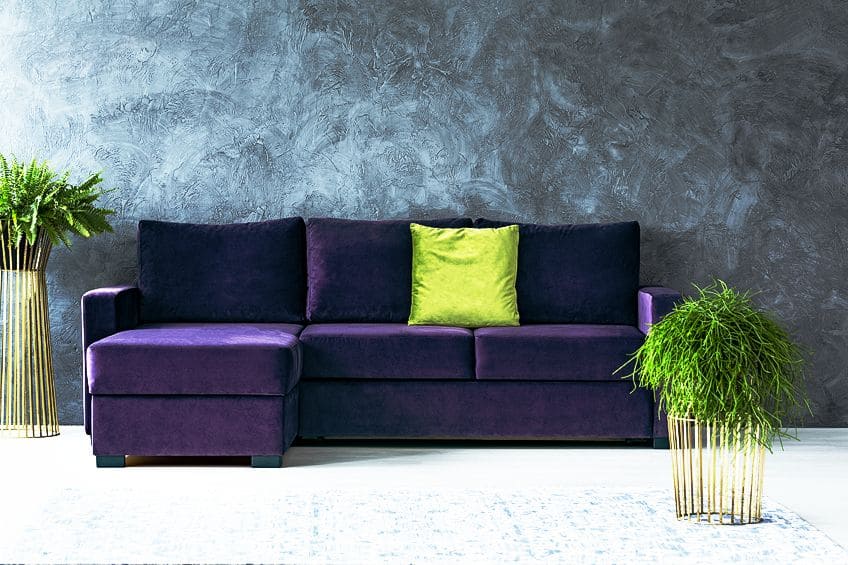
Psychology of Green and Purple Mixtures
Although the colors that green and purple make are very neutral, they can still have an impact on your mood and feelings. The combination of the calm, balance, and growth from green and inspiring, ambition, and wisdom from purple give these mixtures many positive effects.
Gray Mixture Meaning
Gray is a color that is often associated with neutrality, stability, and practicality. This color reminds us of unmoving mountains and represents an equal mixture of black and white. Gray can have a stabilizing, balancing, and calming effect, which soothes and relaxes you. However, it can also have negative effects of sadness, pessimism, boredom, and indecision or uncertainty.
Gray symbolizes intellect and compromise as well as reliability and modesty.
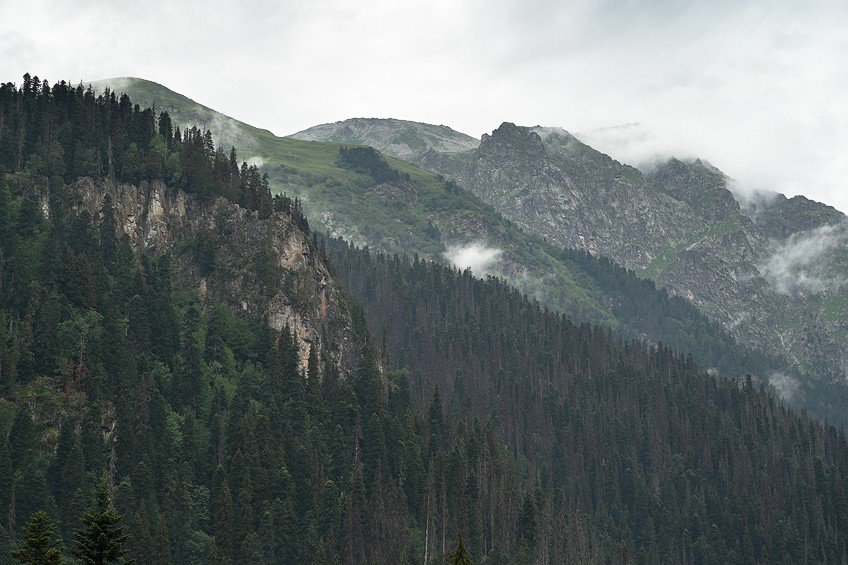
Brown Mixture Meaning
Like green, brown is seen all around us in the natural world and reminds us of sturdy tree trunks. This color evokes feelings of reliability, stability, safety, and being grounded. Brown symbolizes wisdom, support, and honesty and creates a comforting space. Brown, however, can also be viewed as too safe making it dull, boring, and predictable, especially deeper shades.
Blue Mixture Meaning
Blue is associated with many things from the sky to the vast ocean and can have just as many meanings and symbolisms. It is primarily associated with trust and security and so can have a calming and relaxing effect. Blue encourages reflection, loyalty, and confidence, however, like gray it can also have a depressing effect. Like brown, blue can also give the feeling of predictability and boredom.

You can see how mixing different kinds of greens and purples can produce a large array of colors. Depending on the temperature and ratios of your colors, you can produce a variety of neutrals including gray, brown, and blue. These colors are very versatile and are great to use in your home and landscape art or can even be combined with other colors to change their values and saturation.
Frequently Asked Questions
What Does Green and Purple Make When You Mix Them?
Green and purple will usually combine to produce a dark gray color. However, you can also create browns by combining green and purple hues with warm undertones or make a gray-blue by mixing green and purple with cooler undertones.
How Do You Use Gray in Art?
The color gray can be used for many things in art; however, it is most commonly used when painting mountains or distant terrain. Cool grays make objects appear as though they are receding and give depth to the background of your art, while warm grays make objects feel closer so are better for objects in the foreground. Gray can also be used symbolically in art to give the piece a sad or stoic atmosphere.
Megan is a writer and researcher who graduated from the University of Cape Town with a degree in Social Sciences, specializing in Psychology and Environmental Science. Her passion for knowledge and leaving a positive impact has fueled her current work in conscious and sustainable growth in Southern Africa. Megan’s love of nature has also led her to train as an animal behaviorist. She works part-time training and rehabilitating dogs. Megan is interested in the physical and psychological effects of colors in our environment on our mood and well-being. In addition, she is concerned with how art and creativity have been an integral part of human society. Megan van Schoor has been writing blog posts on the topics of painting, drawing, and color theory for acrylgiessen since 2021.
Learn more about Megan van Schoor and about us.
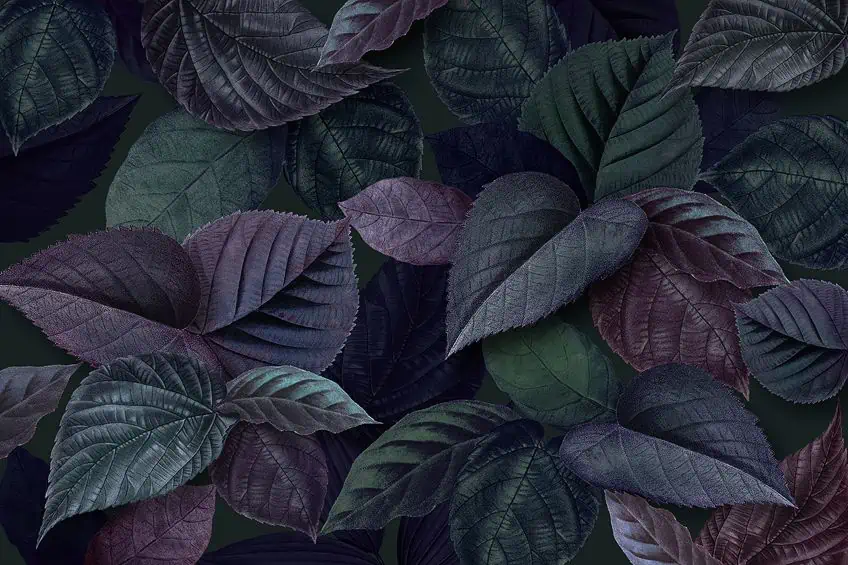


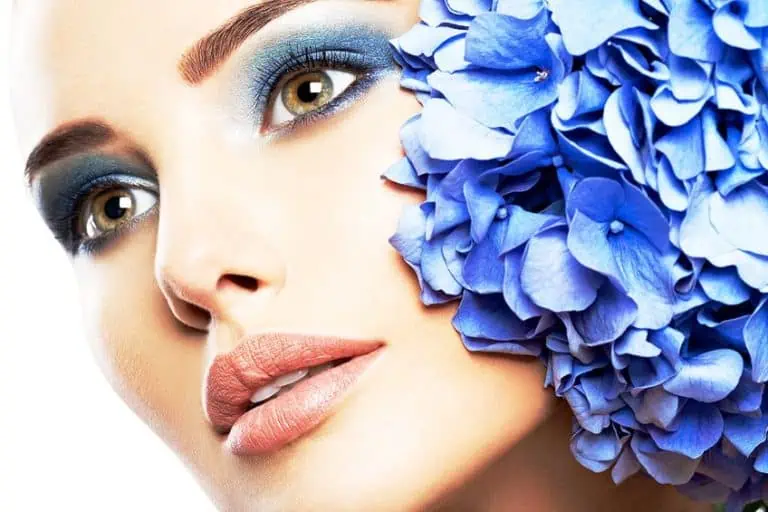
![Mixing Colors – The Best 30 Tips on How to Mix Colors [Guide]](https://acrylgiessen.com/wp-content/uploads/2020/05/mixing-colors-768x512.jpg)
